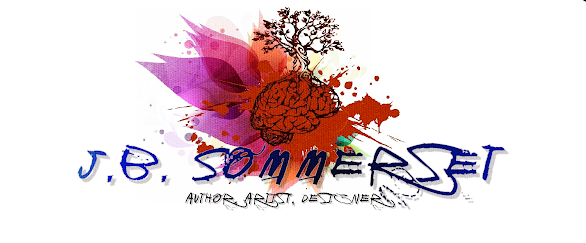Point of view...
This is one I have experimented with a lot. When I first started writing, back in the day (eighth grade, I think), I wrote in the standard way, following the usual rules. My first novel was written in the third person omniscient POV. I never published that novel. I have considered going back and redoing it recently, but it's hard to find the time and it's 750 pages. Following that novel, I wrote a couple of more stories in the third person omniscient; none of them were perfect- I was finding my writing chops. Point of view is a massive part of a person's style.
Learning which POV works for you is part of finding out how you shine as an author or creator.
I will give a brief overview of the three points of view, and some tips on how to be successful with each, even the dreaded second-person point of view. So, let's dive right in!
Starting off, we have first-person. The first book I ever published was "Patchwork Indigo." It was in the first person. I resisted it for so long because I didn't like the first person. Most people don't, it's inherently frowned upon in the literary world and usually reserved for autobiographies and nonfiction and terrible self-inserts. I resisted using it for almost twelve years. Patchwork Indigo started as a journal entry, evolved into a short story, and became a novel. I tried reworking it over and over again to avoid using the first person POV, in the end, there was no other way it could be done.
One of the biggest problems with first-person is that it's commonly used by people who want to write themselves into their own work (think online fanfiction and romance- the kind you can find on Amazon in the "smut/erotica" section). The bulk of first-person stories are crap because it is essentially an ego-driven way to write.
I followed up that first novel with a second in the first person POV. I started it as a teenager in the third person. That novel was "To Kill them Softly." It was challenging to change it from third to first person, but the story worked out better that way because it was meant to be a memoir-type story.
One of the safest tips I can give people about writing in the first person is to describe the whole scope of the main character, his or her positive as well as negative traits. Good first-person novels don't have a hero riding in the front seat, they have flawed people in bad situations, and most don't know what they are doing. Go into their darkest thoughts, make them a little bit of a "shit." Make the reader dislike them at times.
I didn't name the character in To Kill Them Softly or Patchwork Indigo. Throughout the entire novel, both of them, the main character's names were never mentioned. I wanted to tell the story in the first person but didn't want it to affect the story itself. Neither story was about the main character, both were about the reader (this is especially true with "Patchwork Indigo"). The number one piece of advice I would give people writing in this style of POV0 is to keep it about the reader.
The next point of view is the second person. This one isn't safe for most people to write in. My advice first and foremost is don't write from this point of view. If you must, there are a few ways it can be used to your advantage. If you happen to be a choose your own adventure novelist, then the second person is the only way to write. Carry on good sirs!
However, if you aren't, be careful with this point of view. It's a loaded gun and can ruin a good thing, that being your magnum opus. Some of the best advice I can give people who write from this point of view is to keep it streaming. What I mean by this is the stream of consciousness. The second person can be used to create a stream of consciousness story, and it works well for that kind of work.
When you use the second person POV, write your novel as though the main character is telling his story to a small audience of friends. If you use the main character's voice like dialogue, you can pull this off, and it can sound fantastic. Another piece of advice I would give is to use the second person to hide who the main character is. If you are trying to add a sense of mystery to the story, this can be a good way. The second person can also be intermingled with the first person to make it more palatable.
Lastly, we have the standard and traditional way to do it. Third-person. Third-person is a great place to start because it can be manipulated into any form the author likes. I used this point of view for "Midlife Mike," "Ugly in the Downs," and "The Lost Pilgrim".
I don't have too much to say about the third person. My tips for this point of view are pretty much straightforward. I only have a couple. First, and this one goes for the other points of view, don't self-insert. Write a story that doesn't have you in it as the main character. Second, make it uniform- if you start off with third-person omniscient, then finish it in the same way. If you start writing it in the past tense, be careful how you transition (if you do transition). Tell the reader an intriguing story and make sure that your style (I talked about this in one of my last posts) shines through, the inner you, the one that has the words to write and the story to tell.
As always, I do things in threes. So I will be back and revisit this again, but before that, I will talk about past, present, and future tense, what they are, and how to use them. As always, how a good day!
Cheers, and keep on writing!




Comments
Post a Comment